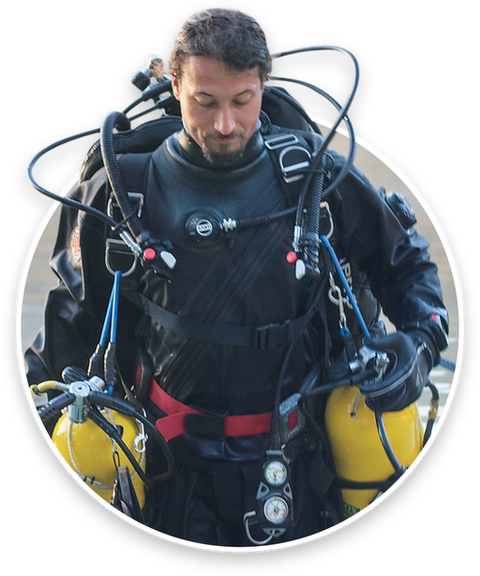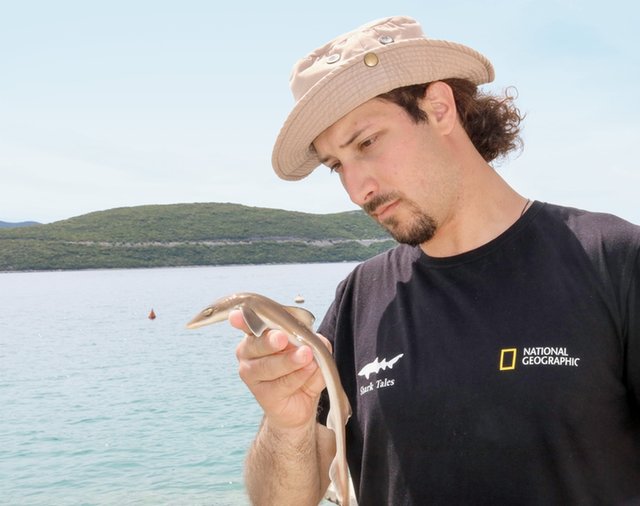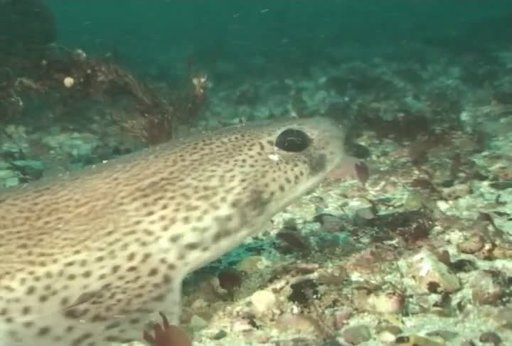AndrejGajićusuallydivesalone.Atnight.Inshallow,murkywater.Hedivesundertheseconditionsbecausethat’swhereandwhenhe’llfindsharks.AndGajićneedstofind sharks.
Gajićismorethanjustadiver.He’saNationalGeographicExplorerandmarinebiologistdedicatedtounderstandingtheeffectsofpollutiononsharksandskatesandrays(flatfishcloselyrelatedtosharks).Todothiswork,heneedstoworkbothinalabandinthe water.

DifficultDive
ManyofGajić'sdivestakeplaceatNeumBayontheAdriaticSea.It’sahotspotforsharks,rays,andskates,andagoodplaceforhimtodirectlyobservethesenocturnal creatures.
Hedoesn’thavetogofartoreachbottomatNeumBay—onlyabout30meters(98 feet).Thewaterhereisthickwithsedimentandchokedbycoloniesofplankton—smallorganismsthatfloatinthesea.Tohim,itfeelsmorelikeswimmingthroughyogurtthanwater.Visibilityatthisdepthiszero.Gajićcan’tseehishandinfrontofhisface.Hewaits,lettinghiseyesadjust.Afterafewminutes,hecanjustmakeoutsomeshapesaround him.
Hisvideocameracarriesapowerfullight.Heswitchesitontocutthroughsomeofthegloom.Andthat’swhenheseesthem:smoothhoundsharks.Theyareswimminginlazycirclesneartheseabed.Gajićisexcitedtoseethembutknowsthatheisthevisitorhere;thisisnothishome.Hisjobisonlytoobserve.Avoidsuddenmovements.Be watchful.

Gajićexaminesanunbornsmoothoundshark,searchingforsignsof deformities.
Alesserspotteddogfishrestsonthe seabed.
It’sthatlastpieceofadvicethatisthemostimportant.Mostofthemarineanimalsheencountershavenointerestinpeopleandarenotlikelytoattack.Buthispresencemustnotcausestresstotheanimals.Toensurethis,hepayscloseattentiontothebodylanguageofthesharks.Doanyofthemseemaggressive?Isheseeinganysuddenchangesinmovementtowardhim?No.Thesharksappearcurious,butnotthreatenedbyhim.That’s good.
Bythelightofhiscamera,hebeginshisobservations.Astheyswimaroundhim,helookscloselyattheirjawsandteeth.Hestudiestheirgills,skin,andmuscles.He’slookingforanyswellingorabnormalities.He’slookingforsignsof disease.
Gajićspendsclosetoanhourinthissilentworld,takingnotes,photographs,andshootingvideosbeforeitistimetoresurface.Tohiseyes,thesharksappearhealthy.ButGajićknowsthatlookscanbedeceiving.Totrulyknowthehealthoftheseanimals,heneedstolookmuch deeper.
SharksintheAdriatic
Researchindicatesthatthereare33 speciesofsharksintheAdriaticSea.Catsharks,smoothhounds,anddogfisharethemostabundant.Thesesharksarefairlysmallandliketostayneartheocean floor.
Intheopenwater,histeamhasencounteredelegantbluesharksaswellaslightning-quickmakosharks.Makosareoneofthefastestmarineanimals,capableofburstsofspeedupto18.8metersasecond(68kilometersor42milesan hour).
AnotherfascinatingspeciesfoundintheAdriaticisthethreshershark.Itsbodygrowsupto6meters(almost20feet)—halfofwhichisanelongatedtailfin.Threshersharksencircleschoolsoffishandthenstunthepreywiththeir tails.
Europe
Bosnia-
Herzegovina
Adriatic
Sea
Mediterranean
Sea
Neum Bay
Malta
